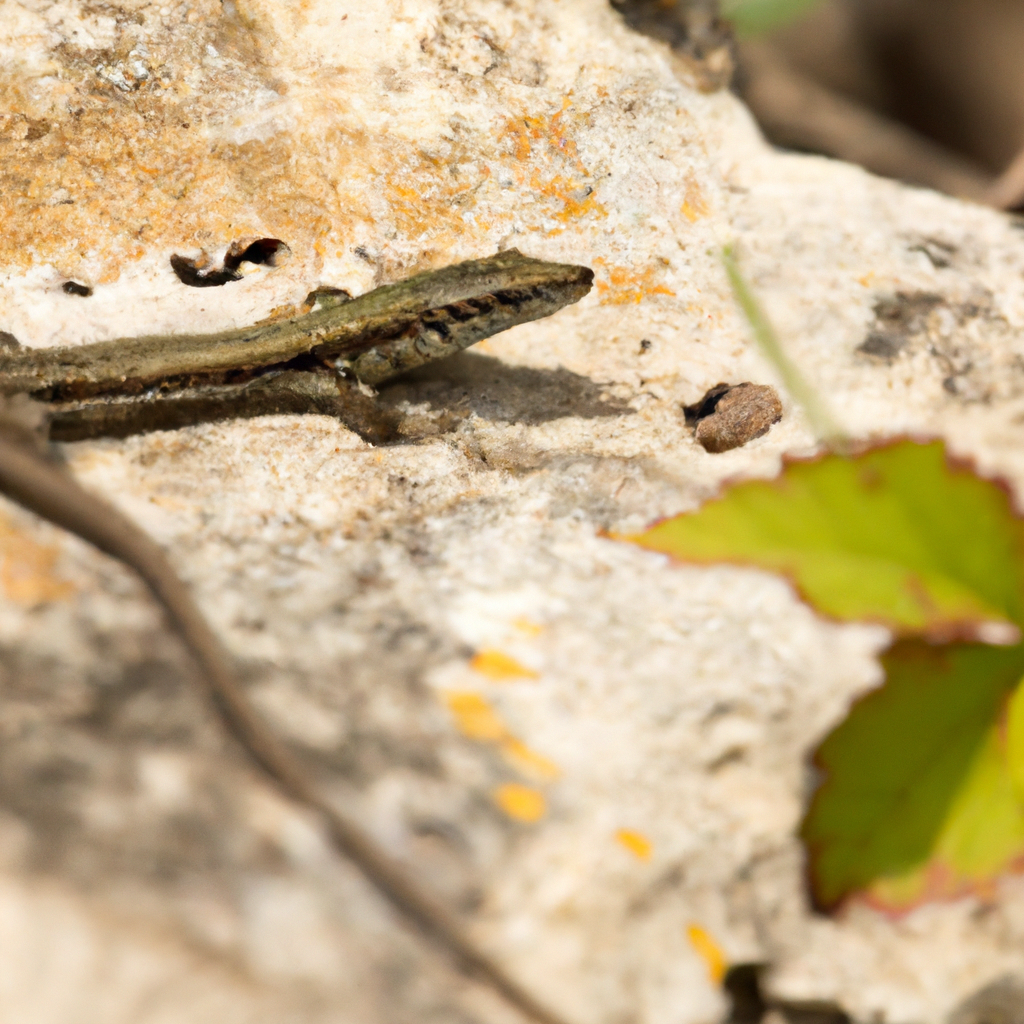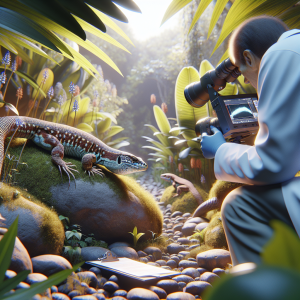Lizards in the Mediterranean Region
You know, when it comes to the diversity of lizard species in the Mediterranean region, it’s truly fascinating! There are so many different types of lizards that call this area home, each with its own unique characteristics and habitats. It’s like a whole world of mini reptiles waiting to be discovered!
These lizards come in all shapes and sizes, from the tiny geckos to the larger agamas and skinks. And let me tell you, their habitats are just as varied as they are! You can find them in rocky crevices, sandy beaches, lush forests, and even urban areas. It’s amazing how adaptable these creatures are.
But you know what’s even more amazing? The important role that lizards play in the ecosystem. They help control insect populations, pollinate flowers, and even serve as a food source for other animals. Without lizards, the balance of the ecosystem would be seriously disrupted.
Unfortunately, like many species, lizards in the Mediterranean region are facing threats to their populations. Habitat loss, climate change, and human activities are putting pressure on these little reptiles. That’s why conservation efforts are so crucial in protecting these species and their habitats.
Speaking of conservation, it’s heartening to see the efforts being made to safeguard these lizards. Researchers, conservationists, and local communities are working together to raise awareness, implement protection measures, and promote sustainable practices that benefit both lizards and the environment.
Now, let’s talk about some of the popular lizard species you can spot in the Mediterranean. From the iconic Mediterranean chameleon to the colorful Ocellated lizard, each species has its own unique charm and appeal. Observing their behavior and adaptations in the wild is truly a rewarding experience.
If you’re keen on spotting lizards yourself, there are some fantastic places in the Mediterranean where you’re likely to encounter these fascinating creatures. Whether you’re exploring coastal areas, rocky cliffs, or rural landscapes, keep your eyes peeled for these elusive reptiles. Who knows, you might just make a new lizard friend along the way!
Diversity of Lizard Species
Alright, let’s dive into the intriguing world of the characteristics and habitats of lizards in the Mediterranean region. It’s fascinating to learn about these unique creatures and where they call home.
First off, when we talk about the characteristics of Mediterranean lizards, we’re looking at a wide range of sizes, colors, and behaviors. From the tiny wall lizards to the larger ocellated lizards, each species has its distinct features that help them thrive in their environment. Some lizards have vibrant hues to blend in with their surroundings, while others have intricate patterns for camouflage.
Now, let’s shift our focus to their habitats. Mediterranean lizards are quite adaptable and can be found in various ecosystems, including rocky cliffs, dry scrublands, and even urban areas. These reptiles are known for their basking behavior, soaking up the sun’s warmth to regulate their body temperature. It’s not uncommon to spot them perched on rocks or walls, soaking in the Mediterranean sun.
What’s particularly interesting is how these lizards have evolved to survive in their habitats. Their ability to climb, sprint, and even change color to match their surroundings showcases their remarkable adaptations. Some species have developed specialized toe pads for gripping onto surfaces, while others rely on their quick reflexes to evade predators.
When it comes to reproduction, Mediterranean lizards have unique breeding habits, with some species laying eggs and others giving birth to live young. Their reproductive strategies are closely linked to their habitats and the availability of resources.
Overall, exploring the characteristics and habitats of lizards in the Mediterranean region offers a glimpse into the intricate web of nature. It’s amazing to see how these creatures have carved out their niche in this diverse environment, showcasing the beauty and resilience of wildlife in the Mediterranean.
Characteristics and Habitats
Alright, so let’s talk about conservation efforts when it comes to lizards in the Mediterranean region. It’s crucial to understand that these unique creatures face various threats to their survival, and conservation plays a vital role in protecting their populations.
You see, with increasing urbanization, habitat destruction, pollution, and climate change, lizards are facing significant challenges. That’s where conservation efforts come into play. Scientists, researchers, conservationists, and even local communities are working together to safeguard the habitats of these fascinating creatures.
Conservation efforts for Mediterranean lizards often focus on preserving their natural habitats. This means protecting critical ecosystems where lizards live, breed, and forage for food. By maintaining these habitats, we can ensure that lizards have a safe environment to thrive in.
Another important aspect of conservation is raising awareness about the importance of these reptiles in the ecosystem. Educating the public about the role lizards play in maintaining the balance of their ecosystems can lead to better conservation practices and more support for protective measures.
Research also plays a significant role in conservation efforts. By studying the behavior, population dynamics, and ecological needs of different lizard species, scientists can develop effective strategies for their protection. This research helps identify key areas for conservation action and informs decision-makers on the best ways to safeguard these reptiles.
Furthermore, conservationists often collaborate with local authorities to establish protected areas and implement conservation programs. These initiatives aim to regulate human activities that may harm lizard populations and ensure that laws and regulations are in place to protect these species.
Overall, conservation efforts for lizards in the Mediterranean region are essential for preserving their biodiversity and ensuring their long-term survival. By working together to protect their habitats, raise awareness, conduct research, and implement conservation programs, we can make a positive impact on the future of these remarkable creatures.
Importance of Lizards in the Ecosystem
Alright, where we’ll explore the threats facing lizard populations in the Mediterranean region. This part is crucial because it sheds light on the challenges these fascinating creatures are up against in their natural habitats.
You see, despite their resilience, lizards are not immune to the various threats that come with human activities and environmental changes. One of the major concerns is habitat destruction. As urbanization and agricultural expansion continue to encroach on the natural habitats of lizards, their living spaces are being reduced, making it harder for them to thrive.
Another significant threat to lizard populations is climate change. The changing climate patterns can disrupt their breeding cycles, alter their food sources, and even force them to migrate to new areas in search of suitable conditions. This disruption can have a cascading effect on the entire ecosystem, as lizards play a vital role in maintaining the balance of their habitats.
Let’s not forget about pollution, which poses a serious threat to lizards in the Mediterranean region. Pollution from various sources, such as pesticides, plastics, and chemicals, can contaminate their food sources and water, leading to harmful effects on their health and overall well-being. This pollution not only directly impacts the lizards but also affects the entire food chain they are a part of.
Furthermore, invasive species pose a significant threat to native lizard populations. When non-native species are introduced to an ecosystem, they can outcompete local lizards for resources, disrupt the natural order, and even prey on native species, leading to a decline in their numbers.
Overall, Section V will highlight these pressing threats to lizard populations in the Mediterranean region, emphasizing the importance of conservation efforts and raising awareness about the need to protect these unique and valuable creatures. It’s essential for us to understand these challenges and work together to ensure a sustainable future for lizards and their habitats.
Threats to Lizard Populations
Alright, so let me tell you about lizards in the Mediterranean region. This part is all about the characteristics and habitats of these fascinating creatures. You see, lizards in the Mediterranean boast a wide range of physical traits and behaviors that make them truly unique.
First off, we dive into the diverse characteristics of these lizards. From vibrant colors to intricate patterns, each species has its own distinct appearance that helps them blend into their surroundings or stand out in the vibrant Mediterranean landscape. We’ll explore how these characteristics play a crucial role in their survival and adaptation to their environment.
Moving on to habitats, we’ll uncover the various landscapes where these lizards call home. From rocky coastlines to lush forests and arid deserts, the Mediterranean region offers a rich tapestry of habitats for these reptiles. We’ll discuss how different species have evolved to thrive in specific environments, showcasing their remarkable adaptability and resilience.
It’s fascinating to learn how these lizards have adapted to their surroundings over time, developing unique behaviors and survival strategies. By understanding their habitats and behaviors, we gain a deeper appreciation for the intricate relationship between these creatures and their environment.
Moreover, exploring the habitats of Mediterranean lizards gives us insight into the delicate balance of ecosystems in the region. These reptiles play a vital role in maintaining biodiversity and ecological stability, making them essential components of the Mediterranean ecosystem.
By delving into the characteristics and habitats of lizards in the Mediterranean, we not only unravel the mysteries of these captivating creatures but also gain a greater understanding of the interconnectedness of life in this vibrant region. So, get ready to embark on a journey of discovery as we uncover the fascinating world of Mediterranean lizards in all their splendor!
Conservation Efforts
Alright, so let’s dive into the fascinating world of popular lizard species that call the Mediterranean region their home. Trust me, you’ll be amazed by the incredible diversity and uniqueness of these creatures.
First up, we have the iconic Common Wall Lizard, known for its vibrant colors and ability to adapt to various environments. These little guys are a common sight in rocky areas and urban settings, showcasing their impressive climbing skills.
Next, let’s talk about the Ocellated Lizard, a striking species with distinctive eye-like markings on its back. Found in scrublands and rocky habitats, these lizards are a true sight to behold, especially during their mating displays.
Moving on to the Turkish Gecko, a nocturnal beauty that thrives in warm climates. With its sticky toe pads and agile movements, this species is a master of stealth and hunting in the dark.
Now, how about the Moorish Gecko? These charming lizards are known for their gentle nature and intricate patterns. You might spot them basking in the sun or clinging to walls with their impressive grip.
Let’s not forget the Green Lizard, a stunning reptile with a bright green body and bold personality. These lizards are often found in sunny meadows and grasslands, showcasing their beauty in the natural landscape.
And who can overlook the Turkish Lizard? With its slender body and quick movements, this species is a true gem of the Mediterranean region, adding a touch of elegance to its surroundings.
Lastly, we have the Snake-Eyed Lizard, named for its snake-like appearance and keen eyesight. These lizards are masters of camouflage and can blend seamlessly into their surroundings, making them a sight to behold in the wild.
So, there you have it, a glimpse into the enchanting world of popular lizard species in the Mediterranean. Each of these creatures brings its own charm and uniqueness to the region, highlighting the rich biodiversity that makes the Mediterranean a haven for reptile enthusiasts.
Popular Lizard Species in the Mediterranean
This part of the article focuses on the diversity of lizard species found in the Mediterranean region. It’s fascinating to learn about the different types of lizards that inhabit this area, each with its own unique characteristics and adaptations.
You see, the Mediterranean region is home to a wide variety of lizard species, ranging from the iconic geckos to the colorful wall lizards. These reptiles have evolved to thrive in diverse habitats, from rocky cliffs to sun-drenched beaches. It’s incredible how they have adapted to their surroundings over time.
One of the things that stand out about the lizard populations in the Mediterranean is their incredible diversity. You have small, agile species like the Moorish gecko, known for its ability to climb walls with ease. Then there are larger lizards like the Ocellated lizard, with its striking patterned scales that provide camouflage in their natural environment.
What’s really interesting is how each species has its own unique set of characteristics and behaviors. Some lizards are masters of camouflage, blending seamlessly into their surroundings to evade predators. Others are known for their impressive speed and agility, allowing them to dart across the landscape in search of food.
It’s also worth mentioning the role that lizards play in the ecosystem. As important predators of insects and small invertebrates, they help maintain the balance of local ecosystems. By keeping pest populations in check, lizards contribute to the overall health of the environment.
Overall, Section number sheds light on the incredible diversity and importance of lizards in the Mediterranean region. From their varied habitats to their unique adaptations, these reptiles are truly fascinating creatures to study and appreciate. So, next time you’re exploring the Mediterranean, keep an eye out for these amazing lizards and marvel at the wonders of the natural world.
Behavior and Adaptations
Alright, so let me tell you about lizards in the Mediterranean region. This section dives into the fascinating behavior and unique adaptations of these reptiles. It’s really interesting stuff!
You see, Mediterranean lizards have developed some amazing behaviors to survive in their habitats. From camouflage techniques to quick reflexes, these creatures are masters of adaptation. For example, did you know that some lizard species can change their skin color to blend in with their surroundings? It’s like they have built-in invisibility cloaks!
And let’s talk about their impressive climbing skills. These lizards are agile climbers, using their strong limbs and specialized toe pads to scale rocks and trees with ease. It’s like watching a daredevil acrobat in action!
But it’s not all about physical abilities – their social behaviors are equally intriguing. Some lizard species display complex courtship rituals to attract mates, while others establish territories through elaborate displays of dominance. It’s like a soap opera drama unfolding in the lizard world!
Now, when it comes to survival strategies, Mediterranean lizards have some clever tricks up their sleeves. Many species have developed the ability to detach their tails when threatened by predators, allowing them to escape while the predator is left with just a wriggling distraction. It’s a literal game of “catch me if you can”!
And let’s not forget about their dietary habits. These lizards have diverse diets, ranging from insects and small mammals to fruits and plants. Some species even have specialized diets that help them thrive in their specific environments. Talk about being picky eaters!
So, as you can see, Section VIII is all about shedding light on the captivating behaviors and adaptations of lizards in the Mediterranean region. It’s like peeling back the layers of a mystery to reveal the incredible world of these reptiles. I can’t wait for you to read more about it!
Best Places to Spot Lizards
Alright, so let’s dive into Section IV of our blog about lizards in the Mediterranean region. This section focuses on the importance of these fascinating creatures in the ecosystem. It’s really interesting to learn about how lizards play a crucial role in maintaining the balance of their habitats.
You see, lizards are not just there for show—they are key players in the ecosystem. They contribute to controlling insect populations by feeding on bugs like mosquitoes, ants, and flies. This natural pest control helps to keep the ecosystem in check and prevents the overpopulation of certain insect species.
Moreover, lizards also serve as prey for other animals like birds of prey, snakes, and mammals. By being part of the food chain, they help sustain the populations of these predator species. It’s like a big interconnected web of life where every species, no matter how big or small, has a role to play.
Another cool thing about lizards is their role in seed dispersal. Some lizard species consume fruits and seeds, and when they move around, they inadvertently help in dispersing seeds to new areas. This process aids in the regeneration of plant species and contributes to the overall biodiversity of the region.
Now, when we talk about the Mediterranean region specifically, lizards are even more crucial due to the unique ecosystem found there. The Mediterranean climate supports a wide variety of plant and animal life, and lizards are an integral part of this intricate ecosystem.
Appreciating the importance of lizards in the Mediterranean ecosystem not only helps us understand the delicate balance of nature but also highlights the need for conservation efforts to protect these valuable creatures. By preserving their habitats and ensuring their continued existence, we are ultimately safeguarding the biodiversity and health of the entire ecosystem.
So, next time you spot a lizard basking in the Mediterranean sun, remember the vital role it plays in maintaining the beauty and balance of its natural habitat.
Appreciating Mediterranean Lizards
Alright, so let’s dive into lizards in the Mediterranean region. This part is all about the behavior and adaptations of these fascinating creatures. You know, lizards are pretty cool in how they behave and adapt to their environments. It’s like they have their own little personalities and survival strategies!
First off, let’s talk about their behavior. Lizards in the Mediterranean region exhibit a wide range of behaviors, from basking in the sun to hunting for food. Some lizards are solitary creatures, while others are more social and live in groups. It’s interesting to observe how they interact with each other and their surroundings.
Now, when it comes to adaptations, lizards are masters of survival. One of the most well-known adaptations is their ability to regenerate their tails. If a predator grabs their tail, they can detach it and grow a new one later. How cool is that? Lizards also have specialized feet that help them climb, grip, and run on various surfaces. Their skin can change color to blend in with their surroundings, providing camouflage from predators.
Another fascinating adaptation is their ability to regulate their body temperature. Lizards are ectothermic, which means they rely on external sources of heat to warm up. You’ll often see them basking in the sun to raise their body temperature. They are also able to cool down by seeking shade or burrowing underground. It’s like they have their own built-in thermostat!
When you observe lizards in their natural habitat, you’ll notice these behaviors and adaptations in action. It’s truly amazing to see how these creatures have evolved to thrive in the Mediterranean environment. By understanding their behavior and adaptations, we can appreciate the unique traits that make lizards such remarkable animals.
So, next time you spot a lizard scurrying across a rock or sunning itself on a tree branch, take a moment to appreciate the fascinating behaviors and adaptations that make these creatures so special. They may be small, but they sure pack a punch in terms of their survival skills and natural charm.




